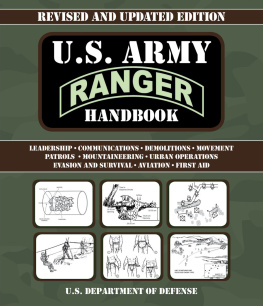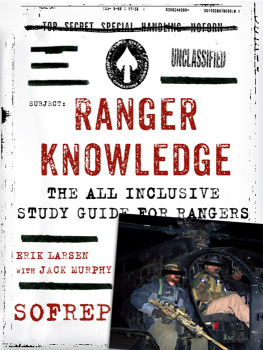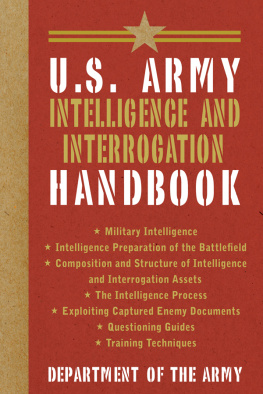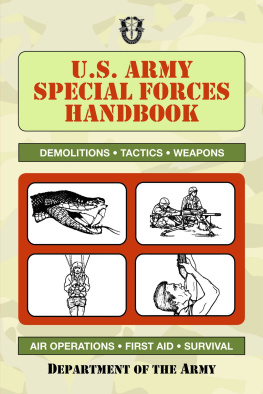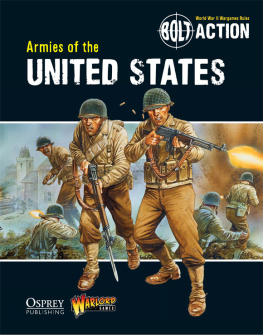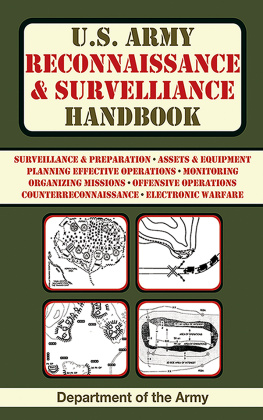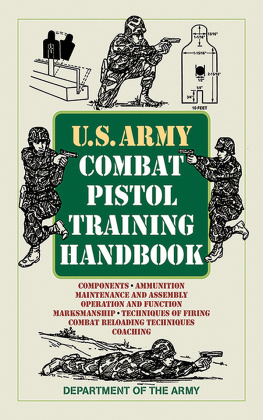

Additional material copyright 2019 by Skyhorse Publishing, Inc.
No claim is made to material contained in this work that is derived from government documents. Nevertheless, Skyhorse Publishing claims copyright in all additional content, including, but not limited to, compilation copyright and the copyright in and to any additional material, elements, design, images, or layout of whatever kind included herein.
All inquiries should be addressed to Skyhorse Publishing, 307 West 36th Street, 11th Floor, New York, NY 10018.
Skyhorse Publishing books may be purchased in bulk at special discounts for sales promotion, corporate gifts, fund-raising, or educational purposes. Special editions can also be created to specifications. For details, contact the Special Sales Department, Skyhorse Publishing, 307 West 36th Street, 11th Floor, New York, NY 10018 or .
Skyhorse and Skyhorse Publishing are registered trademarks of Skyhorse Publishing, Inc., a Delaware corporation.
Visit our website at www.skyhorsepublishing.com.
10 9 8 7 6 5 4 3 2 1
Library of Congress Cataloging-in-Publication Data is available on file.
Cover design by Brian Peterson
Print ISBN: 978-1-5107-5058-6
Ebook ISBN: 978-1-5107-5059-3
Printed in the United States of America
Ranger Handbook
Contents
Figures
Tables
April 2017
Preface
Training Circular (TC) 3-21.76 uses joint terms where applicable. Selected joint and Army terms and definitions appear in both the glossary and the text. Terms for which TC 3-21.76 is the proponent publication (the authority) are italicized in the text and are marked with an asterisk (*) in the glossary. Terms and definitions for which TC 3-21.76 is the proponent publication are boldfaced in the text. For other definitions shown in the text, the term is italicized and the number of the proponent publication follows the definition.
The principal audience for TC 3-21.76 are U.S. Army Rangers and combat arms units. Commanders and staffs of Army headquarters serving as joint task force or multinational headquarters should also refer to applicable joint or multinational doctrine concerning the range of military operations and joint or multinational forces. Trainers and educators throughout the Army will also use this publication.
Commanders, staffs, and subordinates ensure that their decisions and actions comply with applicable United States, international, and (in some cases) host-nation laws and regulations. Commanders at all levels ensure that their Soldiers operate according to the law of war and the rules of engagement (ROE). (See FM 27-10.)
This publication applies to the active Army, the Army National Guard (ARNG)/Army National Guard of the United States (ARNGUS), the United States Army Reserve (USAR), and the United States Marine Corp. Unless otherwise stated in this publication, masculine nouns and pronouns do not refer exclusively to men.
The proponent of this publication is United States Army Maneuver Center of Excellence (MCoE). The preparing agency is the Maneuver Center of Excellence, Fort Benning, Georgia. You may submit comments and recommended changes in any of several waysU.S. mail, e-mail, fax, or telephoneas long as you use or follow the format of Department of the Army (DA) Form 2028, (Recommended Changes to Publications and Blank Forms). Contact information is:
E-Mail: |
Phone | (706) 544-6448 (DSN 834) |
Fax: | (706) 544-6421 (DSN 834) |
U.S. Mail: | Commander, Airborne and Ranger Training Brigade ATTN: ATSH-RB 10850 Schneider Rd, Bldg. 5024 Ft Benning, GA 31905 |
Ranger History
T he history of the American Ranger is a long and colorful saga of courage, daring, and outstanding leadership. It is a story of men whose skills in the art of fighting have seldom been surpassed. Only the highlights of their numerous exploits are told here.
R angers mainly performed defensive missions until, during King Phillips War in 1675, Benjamin Churchs Company of Independent Rangers (from Plymouth Colony) conducted successful raids on hostile Indians. In 1756, Major Robert Rogers, of New Hampshire, recruited nine companies of American colonists to fight for the British during the French and Indian War. Ranger techniques and methods of operation inherently characterized the American frontiersmen. Major Rogers was the first to capitalize on them and incorporate them into the fighting doctrine of a permanently organized fighting force.
T he method of fighting used by the first Rangers was further developed during the Revolutionary War by Colonel Daniel Morgan, who organized a unit known as Morgans Riflemen. According to General Burgoyne, Morgans men were the most famous corps of the Continental Army, all of them crack shots.
F rancis Marion, the Swamp Fox, organized another famous Revolutionary War Ranger element known as Marions Partisans. Marions Partisans, numbering anywhere from a handful to several hundred, operated both with and independent of other elements of General Washingtons Army. Operating out of the Carolina swamps, they disrupted British communications and prevented the organization of loyalists to support the British cause, substantially contributing to the American victory.
T he American Civil War was again the occasion for the creation of special units such as Rangers. John S. Mosby, a master of the prompt and skillful use of cavalry, was one of the most outstanding of the Confederate Rangers. He believed that by resorting to aggressive action, he could compel his enemies to guard a hundred points. He would then attack one of the weakest points and be assured numerical superiority.
W ith Americas entry into the Second World War, Rangers came forth to add to the pages of history. Major William O. Darby organized and activated the 1st Ranger battalion on June 19, 1942 at Carrickfergus, North Ireland. The members were all handpicked volunteers; 50 participated in the gallant Dieppe Raid on the northern coast of France with British and Canadian commandos. The 1st, 3rd, and 4th Ranger battalions participated with distinction in the North African, Sicilian, and Italian campaigns. Darbys Ranger Battalions spearheaded the Seventh Army landing at Gela and Licata during the Sicilian invasion, and played a key role in the subsequent campaign, which ended in the capture of Messina. They infiltrated German lines and mounted an attack against Cisterna, where they virtually annihilated an entire German parachute regiment during close in, night, bayonet, and hand-to-hand fighting.
T he 2nd and 5th Ranger battalions participated in the D-day landings at Omaha Beach, Normandy. It was during the bitter fighting along the beach that the Rangers gained their official motto. As the situation became critical, the commander of the 29th Infantry Division stated that the entire force must clear the beach and advance inland. He then turned to Lieutenant Colonel Max Schneider, commander of the 5th Ranger Battalion, and said, Rangers! Lead the way. The 5th Ranger battalion spearheaded the breakthrough. This enabled the Allies to drive inland, away from the invasion beaches.
T he 6th Ranger battalion, operating in the Pacific, conducted Ranger-type missions behind enemy lines. These missions involved reconnaissance and hard hitting, long-range raids. These Rangers were the first American group to return to the Philippines, destroying key coastal installations prior to the invasion. A reinforced company from the 6th Ranger battalion formed the rescue force that liberated American and Allied prisoners of war (POWs) from the Japanese prison camp at Cabanatuan.
Next page
